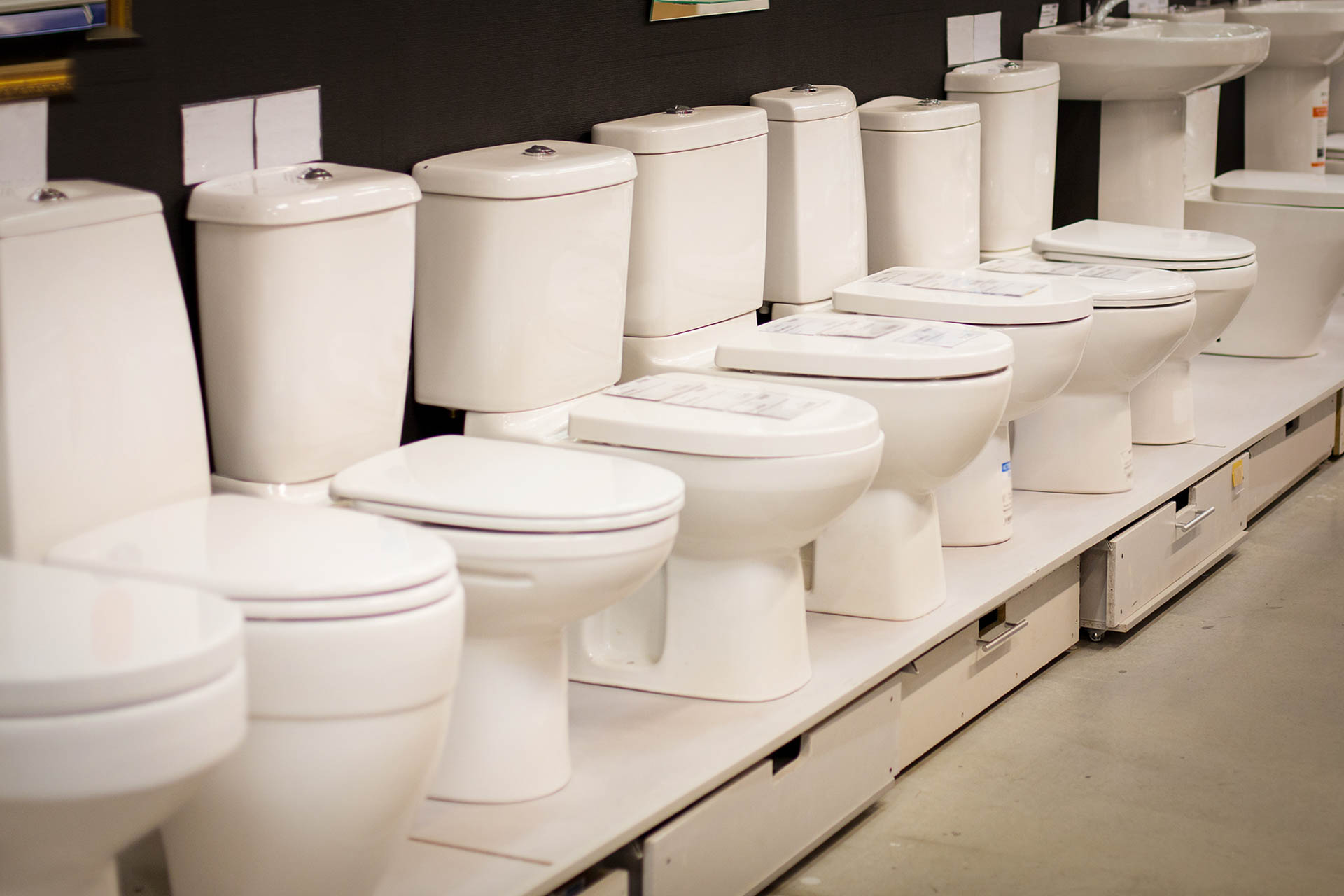Picking out the best toilet should be easy, but there are a lot more options than you may realize. Here’s everything you need to know.
If you’re like most people, you don’t spend a lot of time thinking about your toilet. Your current toilet is likely a standard white two-piece unit—but with so many options these days, there’s nothing “standard” about any toilet.
Size, style, and technology all play a part in finding the right toilet for your home, and the perfect toilet for one bathroom may not be perfect for another. We’ve put together the ultimate guide to choosing the right toilet, with everything you need to consider, tips to remember, and a few models we like.
Size & shape
The first thing to consider when choosing a toilet is the size and shape, and how much space it will take up in your bathroom.
Toilets generally come in one of three bowl shapes: elongated, compact elongated, and round. The elongated toilet is very common and usually considered more comfortable, while the round toilet is smaller and generally more appropriate for bathrooms dedicated to children or for very tight spaces. The elongated toilet can measure up to 31” from the wall and the round toilet is usually not more than 28” from the wall.
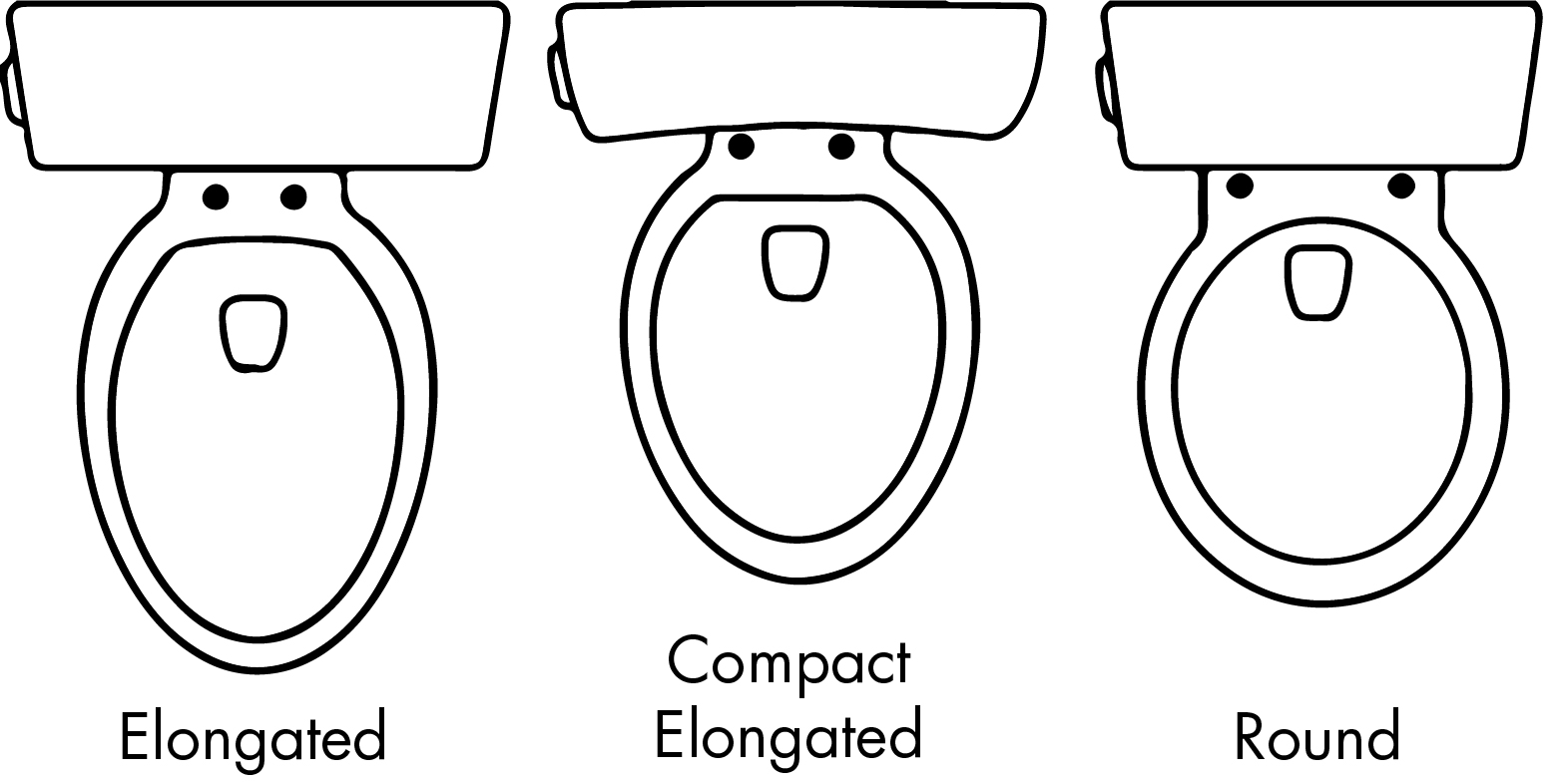
Tip: Measure your bathroom to determine if the toilet you like will fit.
The standard height of a household toilet is between 14” and 15” tall. However, the Americans with Disabilities Act mandates that toilets should be at least 16.5” tall. You don’t have to choose an ADA compliant toilet for your home, but you may find that a 15” toilet feels small to you because you’ve gotten used to the higher public toilets. Comfort height toilets come up to 19” tall, which is roughly the same height as your dining room chairs and makes it easier for seniors or people with back problems to sit down and stand up.
Tip: Consider both who will be using the toilet in the short run, and who might use the toilet in the long term when deciding how tall of a toilet you want.
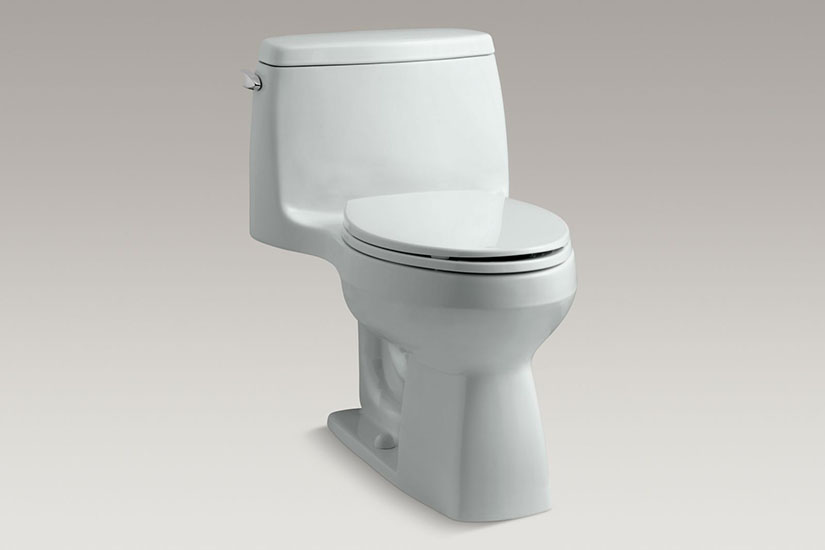
Wall-mounted or free-standing?
A good way to narrow down the list of possible toilets for your home is to decide what type of toilet you’d like. There are three types of toilets: one-piece, two-piece, and wall-mounted. The two-piece toilet is by far the most ubiquitous type of toilet. While the tank is designed to fit the bowl, there is always some kind of seam between that can be difficult to clean. The classic one-piece toilet has the same looks almost identical to the two-piece but integrates the tank and bowl into a single seamless design, which makes cleaning easier and saves space.
Wall-mounted toilets are becoming more and more popular for their sleek look and minimal footprint. Wall-mounted toilets either have a tankless design or hide the tank behind the wall. Installation is more complicated, but the toilet takes up a lot less space and is easier to clean. There are also floor-mounted tankless toilets, like the Kohler Veil. These toilets are slightly more classic in look, but with all the benefits of a wall-mounted toilet.
Tip: Consider the style of your home. A wall-mounted or floor-mounted tankless toilet looks fantastic in a modern bathroom but would be inappropriate in a very traditional bathroom.
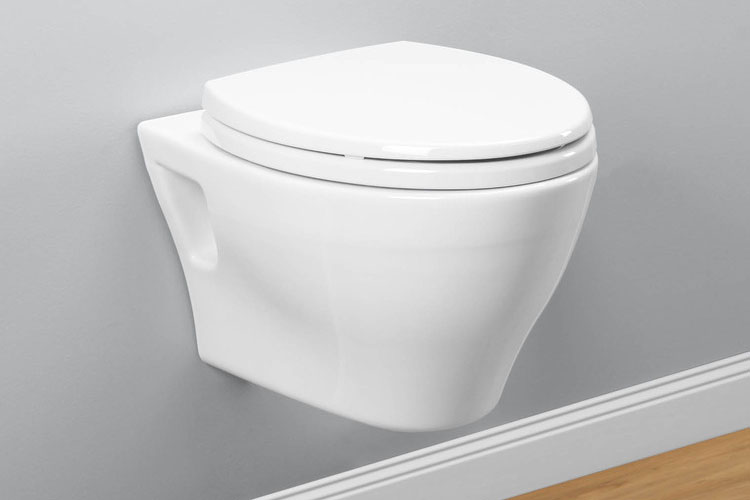
Flushing systems
The average toilet gets flushed around 2,000 times per year. Before 1994, the average toilet required 3.5 gallons of water per flush—that is literally a lot of water and money down the drain. Toilets manufactured after 1994 most likely require 1.6 gallons of water to flush. EPA WaterSense labeled toilets use at least 20% less water than the current federal standard of 1.6 gallons, and modern dual-flush technology means you use as little as .6 gallons of water per flush.
There are two types of flushing systems. Toilets in private homes generally use a gravity flushing system, which uses the force of gravity to empty the bowl. The benefit of gravity flushing is that the toilet has fewer moving parts, which means repairs are less likely and less expensive.
Some manufacturers like Toto have come up with a variety of branded gravity-assisted flushing systems. Don’t worry so much about the technical aspects of how the toilet flushes but rather defer to reviews of any toilet you’re considering purchasing to see if it’s living up to the manufacturer’s promises.
The other option is a pressure-assisted flush system, which uses air pressure to empty the bowl. The benefit is, clogs are less likely, but with more moving parts, pressure-assisted flush toilets can be very noisy and may need more maintenance. Also, not all plumbing configurations can accommodate a pressure-assisted toilet—you may want to check with your plumber or contractor before making your purchase.
Tip: Consider how much use traffic the toilet will get—and make sure the toilet you choose carries the WaterSense label!
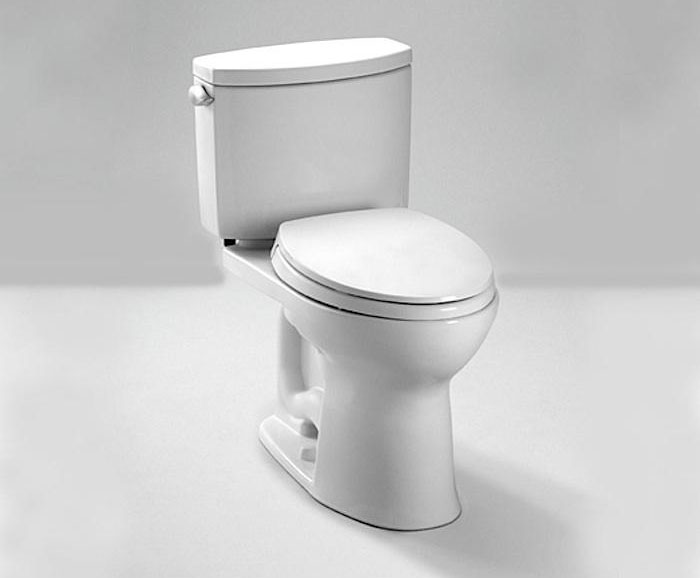
The act of flushing
There are differences not only in how a toilet flushes but in how it is flushed. The two main options are the push-button and the lever. The button has a little sleeker look but the lever is usually less expensive. They both function equally well.
Touchless toilets are also increasingly popular. Just wave your hand over the sensor, and the toilet will flush. Great for minimizing germs in the bathroom, especially in a powder room that gets a lot of guest traffic.
Tip: Kohler makes a Touchless kit that can convert almost any other toilet.
Concealed and skirted toilets
Most classic toilet designs have an exposed trapway, which has a lot of rounded corners and edges that collect dust and can be hard to keep clean. Now many manufacturers are designing toilets with a concealed trapway, which is a smooth surface at the back of the toilet, or a skirt, which offers a clean line all the way around the base of the toilet. Both concealed trapways and skirted toilets have a sleeker look and are much easier to keep clean.
Toilets with a skirt or a concealed trapway are installed in a couple of different ways, some attach to a porcelain piece that is bolted to the floor while others make the attachment points accessible at the very back of the toilet. Some skirted toilets that cover the rear of the toilet as well have a skirt that extends very close to the back wall, which can interfere with the supply line of the toilet. Supply lines can be moved, but it’s an expensive job.
Tip: Check the toilet’s spec sheet to make sure your supply line will work with a skirted toilet.
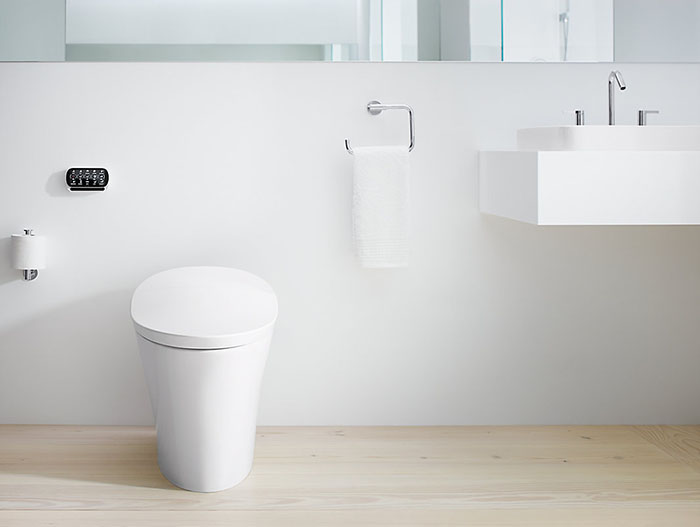
Slow-close seats & lids
Once you’ve used a toilet with a slow-close seat and lid, you’ll never want anything else.
Tip: Avoid the urge to match the toilet lid to the wall paint, and learn to love the slow-close. It won’t take long.
Color
We haven’t run the numbers, but we’re willing to hazard a guess that 95% of all toilets are some shade of white. Why? Well for one, they’re easier to match, and they look appropriate in just about any style of bathroom. White is also modern and classic at the same time, while “fun” colors like red and blue can make even a new bathroom appear dated, and can be a minus to potential buyers should you choose to put your house on the market. Also, it’s a lot easier to see when a white toilet needs to be cleaned.
If the style of your bathroom is ultra-modern, you may consider black or stainless steel, but the higher cost aside, even these colors should be used sparingly.
Tip: When it comes to toilet color, it’s best to keep it conservative.
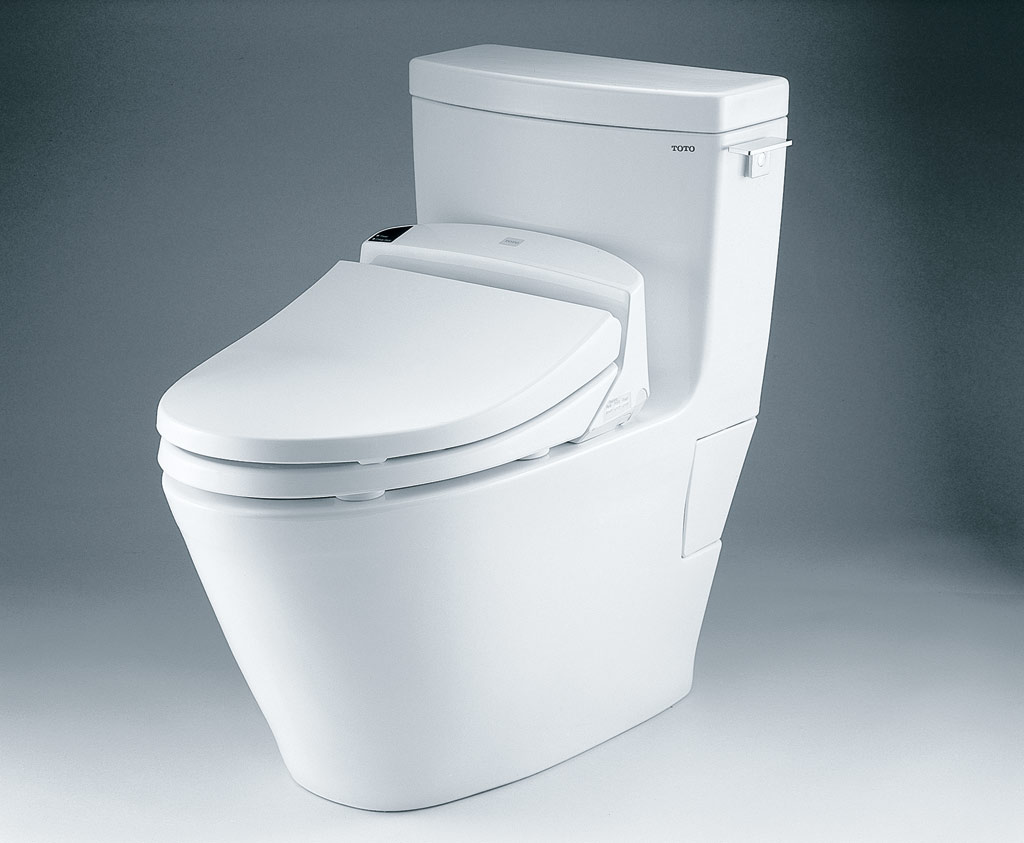
Space-age extras
Have you heard about the toilets in Japan? With their heated seats, built-in bidets, blow dryers, and motion sensors? The secret to these toilets is actually in the bidet-style seat. The first modern Japanese toilet was the Toto Washlet G, introduced in 1980. The term “washlet” is technically trademarked by Toto but is now used colloquially to refer to any bidet-style toilet seat.
While the Googleplex is famous for their fancy toilets, bidet-style toilet seats are slow to catch on, anyone who’s had the chance to use one generally raves about them. Also, the bidet and built-in dryer can save a lot of toilet paper—good for the planet and good for your wallet.
A version of Toto’s Washlet toilet is available in the US, and other manufacturers have slowly been releasing their own versions.
Tip: San Francisco-based Brondell offers a variety of bidet-style toilet seats that can be installed on any conventional toilet.
